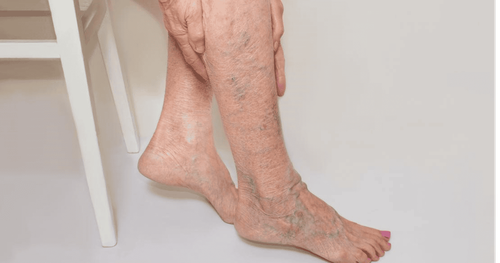This is an automatically translated article.
Brachial vein thrombosis is a less common clinical disease. However, it can cause serious complications such as venous insufficiency after thrombosis, pulmonary embolism... Learning about the formation of venous thrombosis in the arm will support early diagnosis and better treatment. for patients.
1. What is brachial venous thrombosis?
1.1 Definition Brachial vein thrombosis is a rare condition that occurs due to impaired return of the brachial vein due to a blood clot (blood clot). Primary brachial vein thrombosis usually has no specific cause, while secondary brachial vein thrombosis is the result of local or systemic conditions.
Most venous thrombosis occurs more often in the lower extremities than in the upper extremities. Brachial vein thrombosis is divided into two main types:
Superficial brachial vein thrombosis: The brachial superficial vein is the convergence of the basilar vein, the jugular vein, and the middle vein of the forearm at the anterior elbow area. and finally empties into the axillary vein. Brachial Deep Vein Thrombosis: Two deep veins often accompanies the brachial artery, reaching the axillary fossa and rejoining the axillary vein wall. Superficial vein thrombosis is less common than deep vein thrombosis and, if present, is self-limited and disappears. Most cases of superficial brachial vein thrombosis are associated with deep vein thrombosis. Therefore, in clinical practice, doctors often focus more on deep vein thrombosis of the extremities, because this pathology can cause more dangerous complications.
1.2. Etiology and pathophysiology of brachial venous thrombosis, both superficial and deep brachial venous thrombosis, have mechanisms similar to those of other venous thromboembolism, resulting from impaired blood flow. Blood volume, coagulopathy causing hyperactivity and vascular damage (Virchow's triangle), leading to an imbalance between thrombosis and fibrinolysis. This can easily lead to the development of venous thrombosis.
Primary deep vein thrombosis of the arm sometimes occurs as a result of congenital anomalies at the thoracic outlet such as cervical ribs, excess muscle, abnormal insertion tendon or abnormal band of muscle or tendon, thoracic outlet syndrome ( Thoracic Outlet Syndrome (TOS), Paget-Schroetter syndrome (on exertion) causes repeated compression or damage to the underlying axillary vein.
Secondary deep vein thrombosis is often a complication of arm surgery or procedures with central venous catheters, pacemakers, dialysis machines, or drug injection procedures. Abnormalities such as bone overgrowth due to fracture (eg, clavicle, first rib) or hypertrophy of the anterior trapezius or subclavian muscles, often associated with shoulder lifting (weightlifting, or heavy lifting) ) repeat.
Anatomical abnormalities often narrow the clavicle space, causing the veins to become compressed. Thereby causing stagnation of blood flow to the veins, along with lesions in the veins and disturbances in blood coagulation causing hyperactivity. Eventually, blood clots form in the brachial veins.
2. Risk factors
Use birth control pills or hormone replacement therapy. Women who are pregnant or in the postpartum period. Limit movement, stay immobile for a long time. Systemic diseases such as iron deficiency anemia, malignancy, myeloproliferative disease, dehydration, enteritis, systemic lupus erythematosus, Behcet's disease, thyroid disease, neurotrophic sarcoidosis, and obesity. Acquired or inherited hypercoagulable conditions such as antiphospholipid syndrome, MTHFR gene mutation or hyperphosphatemia, factor V Leiden mutation, prothrombin gene mutation, Protein S or Protein C deficiency, Antithrombin deficiency, nephrotic syndrome , primary polycythemia vera and thrombocytosis. Infection of the arm, or surrounding areas. Mechanical effects such as upper extremity surgery, fractures, central venous catheters, dialysis machines, pacemakers, and injections. Vascular malformations.
3. Diagnosis
3.1. Clinical Symptoms Most cases of brachial venous thrombosis are asymptomatic and in some cases resolve spontaneously. However, symptoms may include:
Mild to severe arm pain that increases with movement or work. Change in skin color in the arm area to a dark red or blue-black color. Swollen arm area, feeling of heaviness in the arm with blood clot. The skin is swollen with heat and can be very painful to the touch. Fever of unknown cause. Superficial veins can become dilated and raised above the surface of the skin. In some cases, there may be coughing up blood, shortness of breath, chest pain... these are signs of brachial vein thrombosis causing pulmonary embolism. 3.2. Subclinical Doppler ultrasound or 2D vascular ultrasound: The first choice in cases of suspected venous thrombosis in general and brachial vein in particular because of its non-invasive, inexpensive, and convenient nature. Observational studies have an acceptable sensitivity and specificity for the diagnosis of brachial venous thrombosis. Catheter-based angiography: Rarely used clinically because of its invasive nature, it is therefore often reserved for situations where studies are required. Computed tomography (CT-scan) and magnetic resonance imaging (MRI) are non-invasive venography methods. However, these modalities are not usually used for the initial diagnosis of superior extremity venous outflow obstruction. D-dimer: A degradation product of cross-linked fibrin, which may be elevated in patients with venous thrombosis. Patients with suspected symptoms or at risk of venous thrombosis should have complete blood count, erythrocyte sedimentation rate, coagulation tests such as aPTT, PT and Fibrinogen... 3.3. Differential diagnosis Edema associated with other etiologies. Shut off lymphatic vessels.
4. Arm vein thrombosis is dangerous?
Brachial vein thrombosis can lead to death or permanent disability, but usually has a good prognosis if detected early and treated properly.
5. Treatment
Symptomatic treatment: Arm elevation, non-steroidal anti-inflammatory drugs (NSAIDs) to control pain. Anti freeze blood. Catheter thrombolytic therapy. Mechanical thrombolysis.
6. Complications
Pulmonary embolism; Chronic venous insufficiency; Post-thrombotic syndrome; White phlebitis; Blue phlebitis; Infection. Thrombosis of the veins of the extremities in general and thrombosis of the brachial veins in particular is a rare disease. Therefore, the diagnosis and treatment are quite complicated. Therefore, when detecting any unusual symptoms related to arm vein thrombosis, patients should immediately go to the nearest medical facility for timely examination and treatment, in order to limit complications. danger may occur.
Currently, Cardiovascular Center - Vinmec International General Hospital is one of the leading centers in the country for examination, diagnosis, screening and treatment of cardiovascular diseases. With the convergence of a team of experienced and reputable experts in the field of surgery, internal medicine, interventional cardiac catheterization and the application of advanced techniques in the diagnosis and treatment of diseases. Cardiovascular management, along with a system of modern equipment, on par with the most prestigious hospitals in the world such as: 3 Tesla MRI (Siemens), 640 CT machine (Toshiba), other equipment EVIS EXERA III advanced endoscope (Japan Olympiad), Avace high-end anesthesia system, Hybrid operating room according to international standards... The Cardiovascular Center at Vinmec International General Hospital has achieved many successes. work and gain the trust of a large number of patients.
Please dial HOTLINE for more information or register for an appointment HERE. Download MyVinmec app to make appointments faster and to manage your bookings easily.













